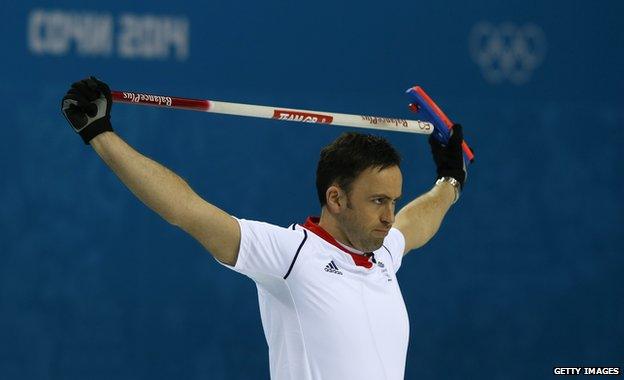Sochi 2014: A guide to curling in 350 words
- Published

Curling can be baffling to the uninitiated. Mike Haggerty explains what is going on.
Curling is played like bowls but with players sliding stones down a 45m (148ft) stretch of ice. Points go to the team that gets more of its stones closer to the centre of a target, called the house. Players have to think about future shots as they play their current shot.
The sport dates back to 16th Century Scotland, and a game between two teams of four players sees each one deliver two stones (looking a little bit like flattened bowling balls with a handle screwed on top and weighing 20kg, 44lb) in turn to determine scores in each end (like an innings). A game normally lasts for 10 ends, although it may finish early if one team concedes or does not have enough stones left to win. If the score is tied after 10 ends, an extra end is played.
There are two types of shot - a draw, when the player is simply trying to place a stone, and a hit, where the objective is to take out an opposition stone.
Sweeping is important. By heating up the ice in front of a stone, sweepers can keep it straighter for longer. When a shot is played, the skip (the team captain who directs shots) will place his or her brush on the ice, giving a target to aim for. The ice conditions change throughout the game, with the players checking using stopwatches.
Sochi 2014: Guide to curling
The key to winning an end is to have the last stone (although it is possible to "steal" an end without the last stone). Before each game, the skips play a shot to try to reach the centre of the house (the button) and whoever finishes closer wins the last stone in the first end. The team that scores in an end gives up the last stone in the next end.
Virtually all stones used throughout the world, including those at the Olympics in Sochi, are made of granite from Ailsa Craig, an uninhabited small island off the west coast of Scotland.
Follow @BBCNewsMagazine, external on Twitter and on Facebook, external